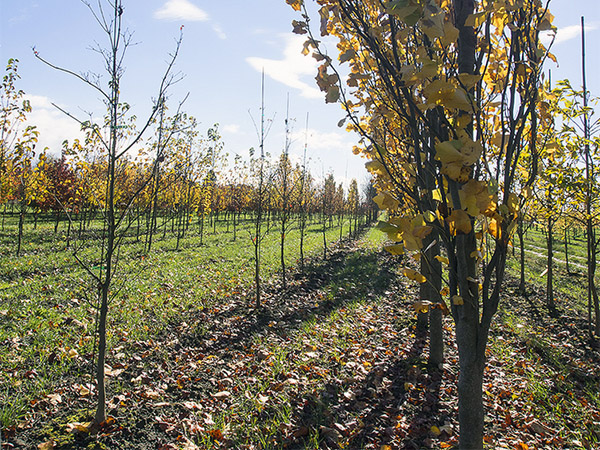Fall is a good time to transplant trees
Transplanting a tree during the growing season is kind of like having surgery without anesthesia. It can be done, but it causes a lot of undue stress. You can plant a tree purchased from a garden center at any time during the growing season, but to dig up a tree and transplant it during summer is not a good idea.

Photo: Dana, Creative Commons, some rights reserved
From the time leaves drop until the ground freezes is an ideal window for to transplanting hardwoods. Opinion surveys of conifers indicate they prefer to be dug and moved exclusively in early spring. The reason trees can be more successfully moved once the leaves are off is because that signals the beginning of dormancy, which of course is a French term that means “sleeping so deep you don’t awaken even if someone digs you up by the roots.”
Most authorities, except those trying to sell you a large tree, will tell you that small trees recover from transplanting much faster than large trees. In fact, a small tree will often overtake a larger one planted at the same time. This can work in your favor, since moving a small tree is easier on your back.
Whatever size tree you have in mind, a wide root ball is much more critical than getting a deep one, so bear that in mind when digging. Ninety percent of a tree’s roots are in the top ten inches of soil. To reflect this fact, the ideal planting hole is saucer-shaped and two to three times as wide as the root system, but no deeper. The flare at the base of the trunk should be visible after planting.
In a natural environment, tree roots extend at least twice the branch length. This means when we dig our little circle, based on what we can reasonably lift, around the tree, we cut off the majority of the root system. It’s not that you have a choice about this—it’s impractical to get more than a small percentage of the roots and commercial nurseries do the same thing.
If you’re one of those few people who think ahead very far, well I’m jealous of you. If you plan to move a tree in say, late November you could go out a month ahead of time and dig straight down 8-10 inches around your tree in a circle the size of the intended root ball. A flat-bottom spade works best. Even in late fall, trees are still moving sugars from twigs and branches down into the roots. When you cut the roots you’ll ensure that all sugars the tree moves from that time on will be stored within the root ball. Not only that, but fine roots will start growing within the root ball and give you, or more accurately, your tree, a more robust root system to move later.
Adding gobs of organic matter to the backfill likely dates back to ancient times, when people might grab an arborist, if one was handy, and throw them in the planting hole. Possibly in response to this, arborists these days recommend little or no additional organic matter, depending on soil conditions. If you have to plant in construction fill or very poor soil such as straight sand or clay, soil may be amended with up to thirty percent organic matter. No fertilizer should be used at planting time or within the first year.
Roots continue to grow until about the end of December, so don’t let your new transplant dry out too much. Mulch about 1” deep when you plant and then add another 3” in late spring. Keep the mulch pulled a few inches back from the trunk. And unless you have reason to believe your hardwood tree is some kind of vampire, don’t stake it. Large conifer transplants, though not known to be vampires, may require staking. Movement is needed for strong trunk development.
Happy planting, and please—no arborists in the backfill.
Paul Hetzler is a horticulture and natural resources educator with Cornell Cooperative Extension of St. Lawrence County.







